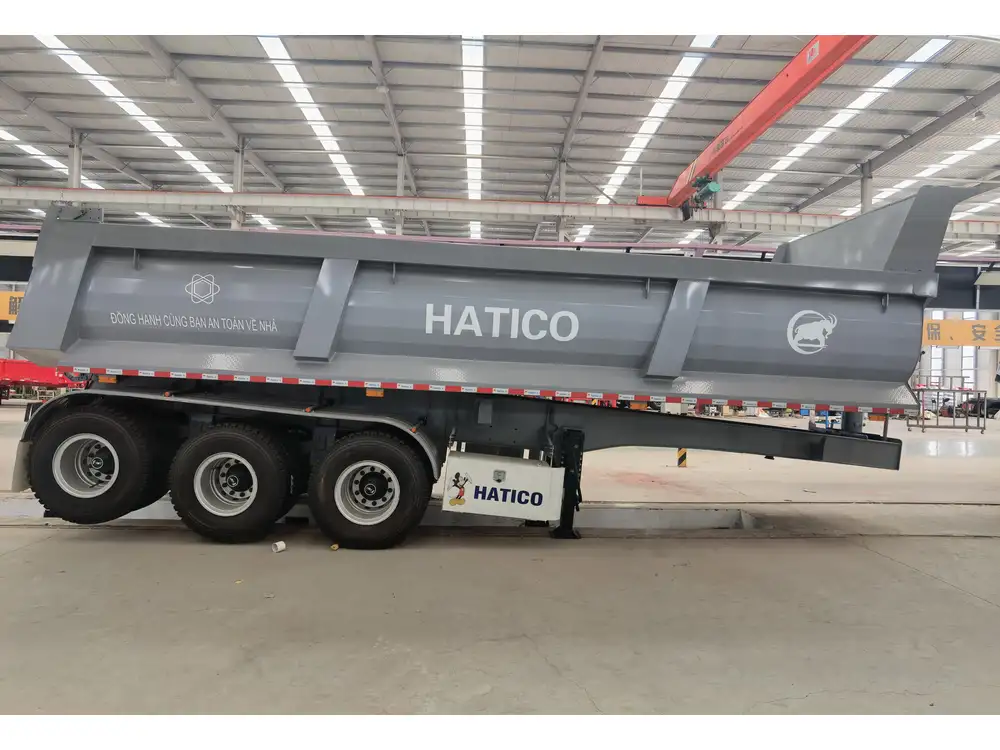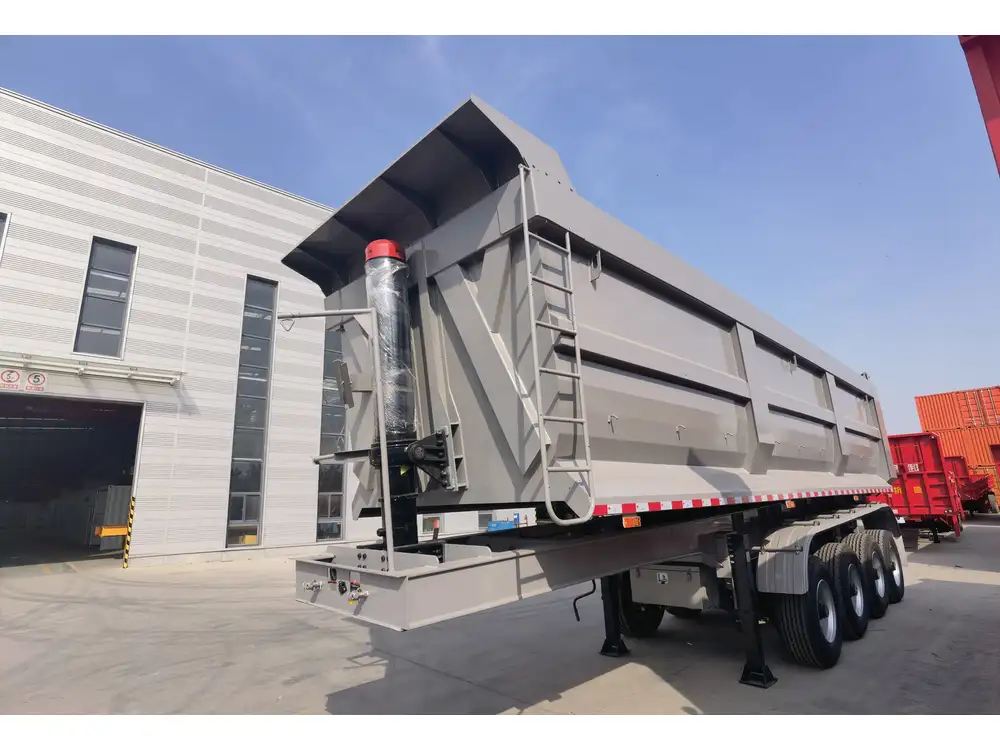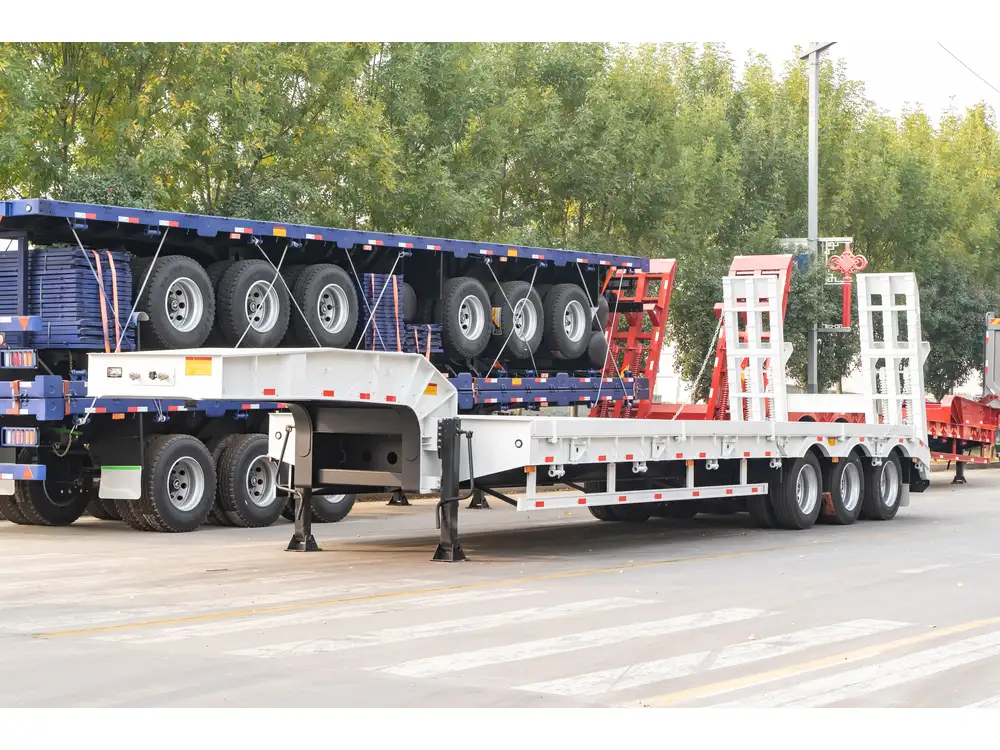As semi-trailer manufacturers, we often encounter various challenges related to the dynamics of towing and trailer stability. Among these challenges, one particularly concerning phenomenon is when a semi-trailer moves sideways, commonly referred to as “trailer sway” or “fishtailing.” This article delves into the multifaceted aspects of this issue, aiming not only to inform but also to provide actionable insights that assist in mitigating the risks associated with this troubling behavior.
What is Trailer Sway?
Definition
Trailer sway occurs when a semi-trailer begins to oscillate laterally behind a towing vehicle, leading to a loss of control. This condition can manifest in different forms, from slight drifting to extreme movement that can result in accidents. The dynamics of trailer sway are influenced by multiple factors, including vehicle speed, load distribution, and environmental conditions.

Types of Sway
- Dynamic Sway: This occurs when the motion of the trailer is influenced significantly by the speed of the towing vehicle, steering inputs, or rapidly changing road conditions.
- Static Sway: Triggered by imperfections in load distribution or weight shifting, often exacerbated by turns or abrupt stops.
The Physics Behind Trailer Sway
The relationship between a semi-trailer and its towing vehicle is complex. Understanding the physics involved can help illuminate why sway happens in the first place.
Center of Gravity
The center of gravity for any trailer is critical in determining its stability. A high or improperly located center of gravity can turn a stable trailer into one that is prone to sway. When weight shifts, especially during turns or sudden stops, movement can disrupt the equilibrium, causing oscillations.

Wheelbase and Axle Configuration
The wheelbase of both the semi-truck and the trailer plays a vital role in sway dynamics. Aspects like tandem axle configurations can help stabilize the load, but if mismanaged, can instead induce sway.
| Wheelbase Configuration | Impact on Stability |
|---|---|
| Short Wheelbase | Increased risk of instability and sway |
| Long Wheelbase | Greater stability during maneuvers |
Vehicle Speeds and Acceleration
As speed increases, so does the momentum and inertia acting on the trailer. A sudden change in speed, such as abrupt acceleration or deceleration, can contribute to trailer sway.
Common Causes of Trailer Sway
Identifying the root causes can assist operators in preventing this dangerous phenomenon. Here are some primary factors contributing to trailer sway:

Improper Weight Distribution
Unevenly distributed loads can drastically influence how a semi-trailer behaves on the road.
- Forward Bias: Too much weight in front can lead to a nose-heavy situation where the back of the trailer becomes unstable.
- Backward Bias: Weight concentrated at the rear can induce oversteering and instability.
Environmental Factors
Bad weather conditions and road surfaces contribute significantly to the challenge of maintaining trailer stability.
- Wind: Crosswinds can exert lateral forces on the trailer, causing it to sway or drift.
- Wet or Icy Conditions: Slippery surfaces diminish traction, which can lead to unpredictable trailer behavior.
Towing Vehicle Specifications
The compatibility between the towing vehicle and the semi-trailer is crucial. A mismatch in specifications can aggravate sway tendencies.
| Vehicle Specification | Effect on Sway |
|---|---|
| Torque and Power | More power can aid in stability; less power increases risk of sway |
| Chassis Design | Advanced chassis designs reduce sway risks |

Recognizing the Symptoms of Sway
The key to addressing trailer sway is early detection. Here are signs that indicate a potential loss of control:
- Vibrations: A strong sensation of vibrations can indicate instability.
- Unusual Steering Feedback: Excessive pull to one side or another when steering may signal an issue.
- Changes in Handling During Turns: Difficulty in rounding corners is often an indicator of a trailer’s response to shifting weight.
Safety Measures and Solutions to Prevent Sway
Load Management and Distribution
Properly distributing cargo before hitting the road is paramount. Operators should follow guidelines for load placement:
- Heavier Loads Forward: Ensure heavier items are placed closer to the front axle.
- Equal Distribution Across Axles: Aim for even weight distribution across both the truck and the trailer axles.

Trailer Design Enhancements
As manufacturers, we play a critical role in engineering solutions that mitigate sway risks:
- Enhanced Stability Features: Implementing advanced suspension systems that absorb shocks and reduce lateral movement can enhance stability significantly.
- Aerodynamic Designs: Improving aerodynamics reduces wind resistance and the lateral forces acting on a trailer.
Advanced Driver Training
Incorporating training programs focused on handling swaying situations can empower drivers.
- Emergency Maneuvers: Teaching effective handling techniques during swaying can prevent accidents.
- Awareness of Conditions: Educating drivers about recognizing hazardous conditions and their effects on trailer stability is crucial.
Use of Stability Control Systems
Incorporating electronic stability control (ESC) systems can dramatically reduce the risk of trailer sway. These systems intelligently monitor vehicle dynamics and make adjustments to maintain stability.
| Technology | Benefits |
|---|---|
| Trailer Sway Control Systems | Automatically apply brakes if sway is detected, restoring stability |
| Anti-lock Braking Systems | Prevent wheel lock during sudden braking, enhancing control |

Frequently Asked Questions (FAQs)
1. How can I tell if my semi-trailer is properly loaded?
- Conduct a visual inspection to ensure weight is distributed evenly. Utilize tools like load scales or consult load distribution charts for specific guidelines based on trailer type.
2. What should I do if my trailer starts swaying?
- Remain calm and avoid making abrupt movements. Gradually reduce speed and, if safe, pull over to assess the load and equipment.

3. Can wind really affect my trailer stability?
- Yes, crosswinds and gusty conditions can significantly impact how a trailer handles, especially if the trailer is tall or has a large surface area.
4. Are there specific semi-trailer designs that perform better against sway?
- Yes, sleek, aerodynamic designs combined with modern stability technology tend to outperform traditional models in terms of sway resistance.
Conclusion
When it comes to the performance and safety of semi-trailers, understanding the mechanics behind when a semi-trailer moves sideways is fundamental. From proper load management to incorporating advanced stability technologies, every measure taken can significantly enhance control and safety on the road. For manufacturers like us, recognizing the importance of these factors not only fosters better designs but also enhances the overall user experience.
As the trucking industry continues to evolve, we must leverage technology, driver education, and sound engineering practices to mitigate risks, ensuring that every journey remains safe and efficient. Proper vehicle dynamics, thoughtful trailer design, and adherence to safety protocols will pave the way for more secure transportation solutions in an ever-changing environment.



